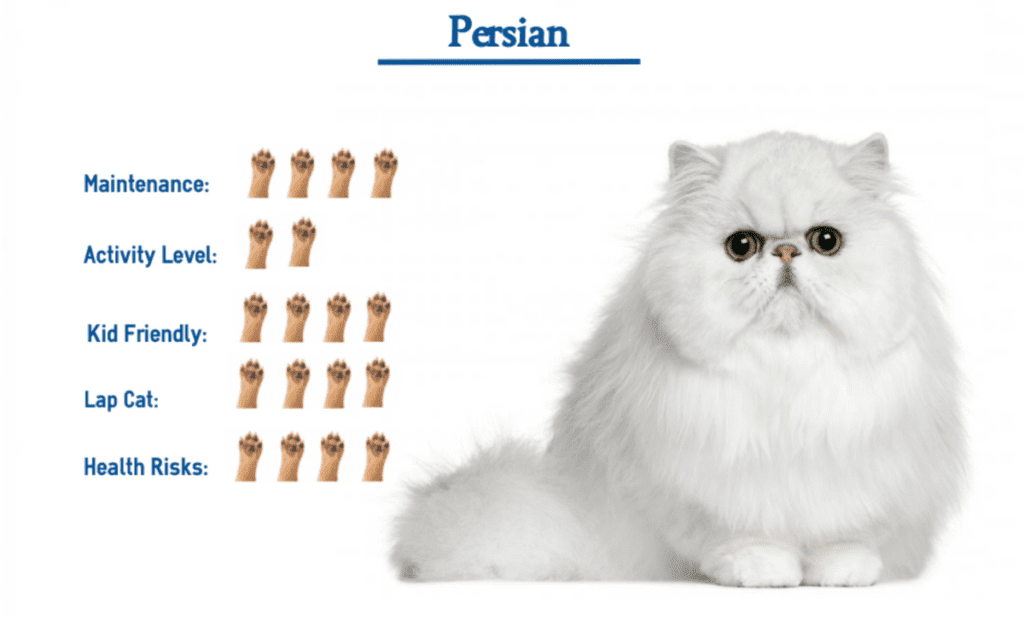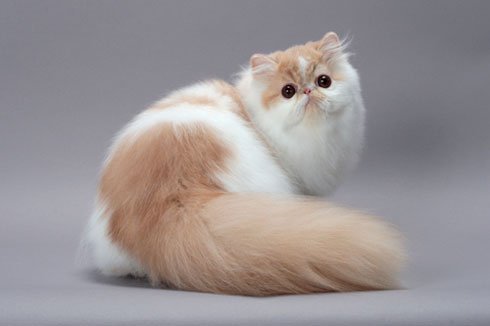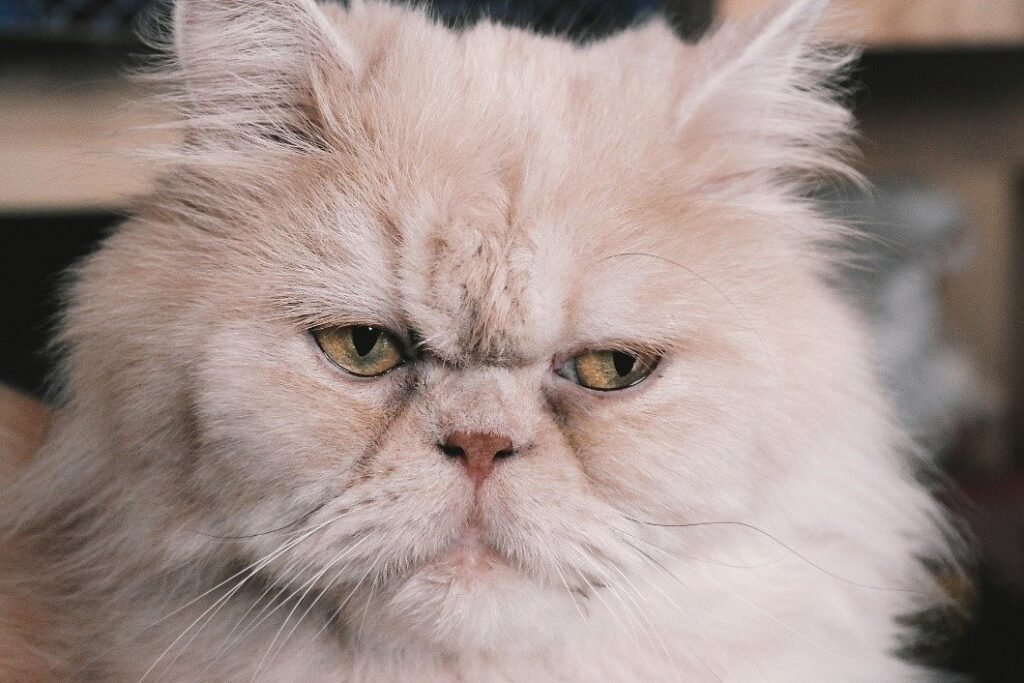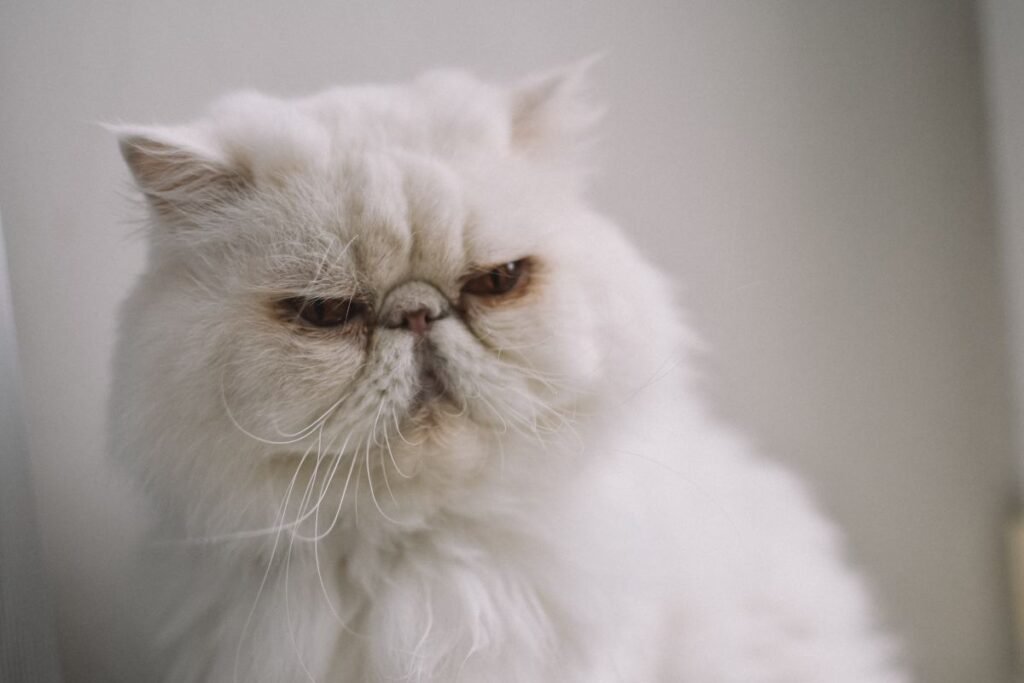Persian cats have long been regarded as one of the most elegant and luxurious breeds in the feline world. With their enchanting fluffiness and strikingly beautiful coats, it’s hard not to be captivated by their regal presence. However, along with their undeniable charm comes a certain level of responsibility and care. In this article, we will explore whether Persian cats truly live up to their reputation as high-maintenance pets, and discover what it takes to provide them with the love and attention they deserve. So, if you’re curious to learn more about the ins and outs of caring for these majestic creatures, let’s delve into the world of Persian cats together!


Physical Appearance
Size
Persian cats are known for their distinctive appearance, and one aspect that stands out is their size. Persian cats are typically medium to large in size, with males generally being larger than females. They have a solid and stocky build, with a sturdy frame that gives them a regal appearance.
Coat
The coat of a Persian cat is truly a thing of beauty. It is long, luxurious, and incredibly soft to the touch. The fur is dense and often requires regular grooming to keep it tangle-free and in good condition. Persians come in a variety of colors, including white, black, cream, blue, and silver, among others. Their glorious coat is undeniably one of their most striking features.
Facial Features
One look at a Persian cat’s face, and you’ll instantly be captivated by their unique facial features. They have a short, broad nose and large round eyes that are set wide apart. The eyes can come in various colors, including copper, green, blue, and odd-eyed, which is a combination of different colors in each eye. Persian cats also have a distinctive pushed-in face, known as brachycephalic, giving them a cute and sweet expression.
Grooming Needs
Daily Brushing
Due to their long and dense coat, Persian cats require daily brushing to prevent matting and keep their fur in top condition. Regular brushing not only helps to remove dirt, debris, and loose hair but also stimulates the skin and promotes healthy hair growth. It is essential to use a soft brush or comb specially designed for cats to avoid hurting their sensitive skin.
Bathing
In addition to daily brushing, Persian cats benefit from regular bathing to keep their coat clean and free from oils or dirt build-up. It is recommended to bathe Persian cats every couple of weeks or as needed. Care must be taken to use a mild cat-specific shampoo and to rinse the coat thoroughly to prevent any residue. After the bath, the cat should be gently towel-dried or blow-dried on a low, warm setting to avoid chilling.
Eye Care
Persian cats are prone to eye issues due to their unique facial structure. The anatomy of their face makes them more susceptible to tear stains, eye infections, and debris accumulation around the eyes. To maintain good eye health, it is crucial to gently clean the area around their eyes daily using a soft, damp cloth. Any excessive tearing or signs of irritation should be promptly addressed by a veterinarian.
Health Issues
Respiratory Problems
One health concern that Persian cats are known for is respiratory problems. Due to their brachycephalic face, they can have difficulty breathing, especially in hot or humid climates. It is essential to provide a well-ventilated environment and carefully monitor them during extreme weather conditions. If you notice any signs of labored breathing or excessive panting, it is advisable to seek veterinary attention promptly.
Polycystic Kidney Disease
Another health issue that affects Persian cats is polycystic kidney disease (PKD). PKD is an inherited condition where fluid-filled cysts develop in the kidneys, potentially leading to kidney failure. Regular veterinary check-ups are crucial for early detection and monitoring. Responsible breeders often test their cats for PKD, and adopting from a reputable source can reduce the risk of this condition.
Eye Problems
Persian cats are also prone to various eye-related problems, including progressive retinal atrophy (PRA) and entropion. PRA is a genetic condition that can lead to progressive vision loss, while entropion is a condition where the eyelids fold inward, causing irritation and discomfort. Regular eye examinations by a veterinarian can help identify any potential issues and ensure timely intervention.
Feeding Requirements
Special Dietary Needs
Persian cats have specific dietary needs that should be considered to maintain their overall health and well-being. Their long coat can make it challenging for them to groom themselves effectively, leading to increased ingestion of hairballs. Including a high-quality cat food formulated for hairball control can help minimize this issue. Additionally, Persian cats can be prone to urinary tract issues, so a diet that supports urinary health is also recommended.
Portion Control
It is important to monitor the portion sizes of your Persian cat’s meals to prevent overfeeding and weight gain. Persian cats are not typically very active and can be prone to obesity if their diet is not carefully managed. Your veterinarian can provide guidance on the appropriate portion sizes based on your cat’s age, weight, and activity level.
Water Intake
Proper hydration is crucial for the overall health and well-being of Persian cats. Encouraging your cat to drink an adequate amount of water helps maintain urinary tract health and prevents issues like urinary crystals or blockages. Providing fresh water in clean bowls throughout the day, and even considering a cat water fountain to entice them to drink, can help ensure they stay properly hydrated.


Exercise
Low Energy Level
Persian cats are generally not as active as some other breeds. They have a low energy level and tend to be more sedentary. This does not mean they don’t need exercise, but rather that their exercise requirements are lower compared to more energetic breeds. Providing playtime and engaging indoor activities are essential to keep your Persian cat mentally stimulated and physically active.
Playtime
Engaging in interactive playtime sessions with your Persian cat can be a great way to provide mental and physical stimulation. Use toys that encourage them to chase, pounce, and bat, appealing to their natural instincts. Feather wands, laser pointers, or puzzle toys can keep your cat entertained and active, helping them maintain a healthy weight.
Indoor Activities
Creating an enriching indoor environment is essential for a Persian cat’s overall well-being. Provide scratching posts, climbing trees, and comfortable resting spots to keep them entertained. Providing different perches or window views can satisfy their curiosity and allow them to observe the world outside. Puzzle feeders can also be used to make mealtime more engaging and stimulating.
Litter Box Maintenance
Regular Cleaning
Maintaining a clean litter box is crucial for the health and happiness of your Persian cat. Scoop the litter box at least once a day to remove waste promptly. It is also recommended to completely change the litter and clean the box with mild detergent on a regular basis to prevent any unpleasant odors and ensure a hygienic environment for your cat.
Type of Litter
Persian cats can be sensitive to certain types of litters, especially those with strong scents or rough textures. Opt for unscented, low-dust clumping litters that are softer on their paws. Avoid using litter with chemicals or additives that may cause allergic reactions. Providing a litter box with enough depth allows your cat to dig and cover their waste comfortably.
Location
Choosing the right location for the litter box is important to ensure your Persian cat’s comfort and encourage consistent litter box usage. Place the litter box in a quiet and easily accessible area of your home, away from their feeding area. Persian cats appreciate privacy and may feel more comfortable with a covered litter box, while others may prefer an open one. Observe your cat’s preferences and make adjustments accordingly.


Socialization Needs
Attention and Affection
Persian cats thrive on attention and affection from their human companions. They are known to be sweet, gentle, and affectionate animals. Regular interaction, cuddling, and grooming sessions help strengthen the bond between you and your Persian cat. Make time every day to provide them with the attention they crave, and you will be rewarded with a loyal and loving companion.
Interaction with Other Pets
Persian cats can coexist harmoniously with other pets, provided proper introductions and careful monitoring are done. Slow and gradual introductions help reduce stress and create a positive association between your Persian cat and any existing pets. Supervise initial interactions and provide safe spaces for each pet to retreat to if needed. With time and patience, your Persian cat can enjoy the company of other pets.
Training
Training a Persian cat can be a rewarding experience that strengthens the bond between you and your feline friend. While they may not be as responsive to traditional obedience training methods as some other breeds, Persian cats can still learn basic commands and tricks through positive reinforcement techniques. Use treats, praise, and patience to motivate and reward desired behaviors, making training sessions enjoyable for both of you.
Veterinary Care
Regular Check-ups
Regular veterinary check-ups are essential for maintaining the health and well-being of your Persian cat. Schedule annual or bi-annual visits with a trusted veterinarian to monitor their overall health, address any concerns promptly, and ensure they are up to date with vaccinations and preventive care. These check-ups provide an opportunity for early detection and intervention, increasing the chances of successful treatment.
Vaccinations
Keeping your Persian cat up to date with vaccinations is crucial for preventing various diseases and ensuring their immune system remains strong. Core vaccinations, such as those for rabies and feline distemper, are recommended for all cats, including Persians. Non-core vaccinations, such as those for feline leukemia virus (FeLV), should be discussed with your veterinarian based on your cat’s lifestyle and exposure risk.
Parasite Control
Protecting your Persian cat from external and internal parasites is an important aspect of their overall health care. Regular treatment for fleas, ticks, and intestinal parasites is crucial to prevent infestations and potential health issues. Discuss with your veterinarian the appropriate parasite prevention and control measures based on your cat’s individual needs and lifestyle.


Costs
Grooming Expenses
The luxurious coat of a Persian cat requires regular grooming, which can contribute to the overall expenses associated with owning this breed. Professional grooming services may be necessary, especially for cats with more challenging coats to maintain. However, routine grooming can also be done at home with the right tools and techniques. Consider the grooming needs and associated costs before bringing a Persian cat into your home.
Veterinary Bills
Owning a Persian cat also comes with veterinary expenses, including regular check-ups, vaccinations, parasite control, and potential treatment for any health issues that may arise. Investing in good veterinary care is essential to ensure the well-being of your Persian cat and can help prevent more significant health problems in the long run. Be prepared for these costs and consider pet insurance to help with unexpected veterinary bills.
High-Quality Food
Providing your Persian cat with high-quality cat food that meets their specific dietary needs is essential for their overall health and well-being. While premium cat food may come with a higher price tag, it can contribute to the prevention of health issues and promote a longer, healthier life for your feline companion. Remember to factor in the cost of appropriate cat food when budgeting for your Persian cat.
Conclusion
While Persian cats have a reputation for being high maintenance, their unique physical appearance and specific care requirements make them truly special. With their beautiful coats, distinctive facial features, and sweet personalities, Persian cats bring joy and companionship to their owners. By addressing their grooming, health, dietary, exercise, and socialization needs, you can ensure that your Persian cat leads a happy and healthy life. Don’t let the maintenance deter you from experiencing the love and loyalty these graceful felines have to offer.



